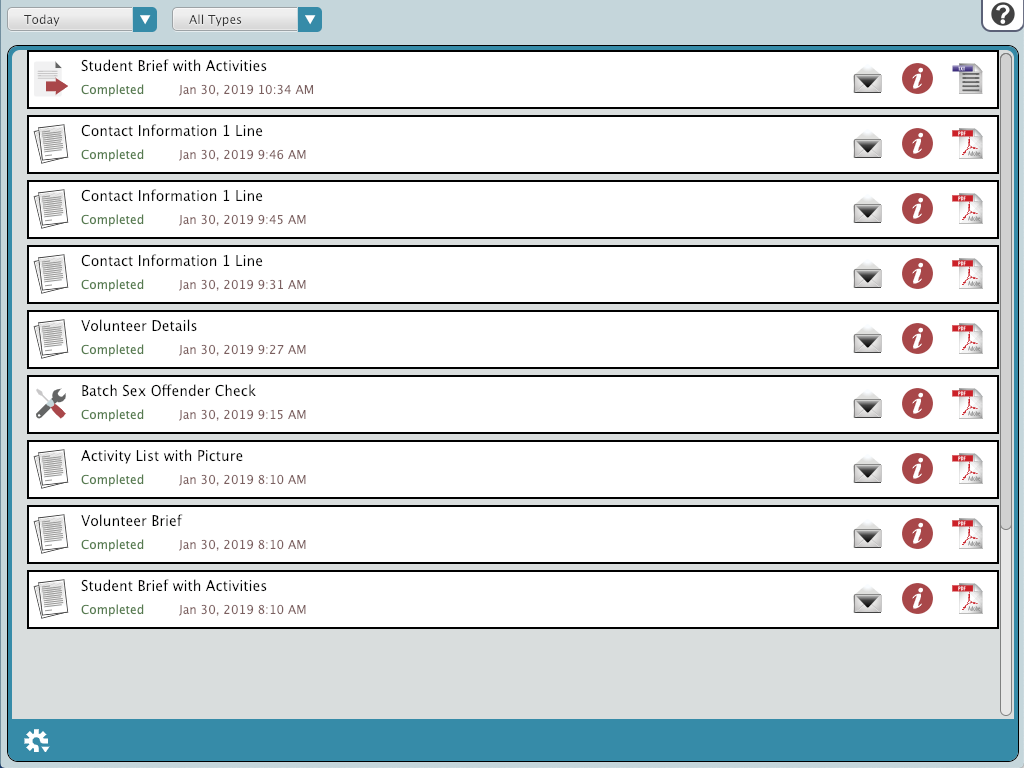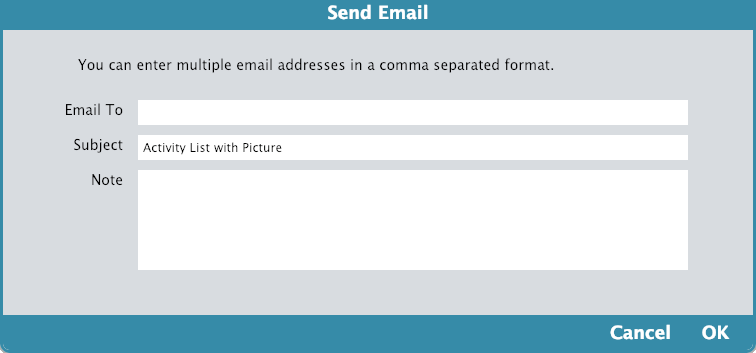Contents
Operations Management automatically orders/sorts all pending operations (i.e. reports, utilities, imports, or exports) and allows you to view summaries and open, email, or save operations that you (or others) have previously completed. Simply think of the Operation Management window as a nerve center that consolidates all past and future operations that you, the current user, the system, or others have been performing.
PDF Reader Needed
By default, reports are generated in PDF format. If you don't have the most current version of Adobe Reader installed on your machine, we recommend it as your default PDF viewer. A free installer can be downloaded from Adobe's web site: http://www.adobe.com/ be sure you continuously update to newer versions as they become available.
Operations Management automatically orders/sorts all pending operations (i.e. reports, utilities, imports, or exports) and allows you to view summaries and open, email, or save operations that you (or others) have previously completed. Simply think of the Operation Management window as a nerve center that consolidates all past and future operations that you, the current user, the system, or others have been performing.
Once a report, utility, import, or export has been initiated, in will be queued in the Operation Management interface. You are able to access this interface everywhere throughout KeepnTrack's Administration when clicking the Operation Management icon. After gaining access to Operation Management, you can start tracking the progress of the current operation and view (or save) previously completed operations. Completed operations shown in the “queue” include the name and status of the operation and are affixed with a time/date stamp. An operation that is currently running provides a Cancel option.
Each time Operation Management is opened, the Date Range drop-down filter at the top of the interface defaults to Today; in other words, only the current user's newest (i.e. Today) operations are initially visible in the Operation Management’s “queue”. Everything in this list is ordered chronologically (newest-to-oldest in top-down order) which is helpful when trying to discover if there are any operations in the queue ahead of yours. The Operation Type drop-down filer defaults to All Types; the All Types selection includes pending (or completed) automatic system operations.
For reasons of accountability and transparency, the Operation Management window will retain all information for canceled and completed operations for a week at least; operations older than a week can be removed from the queue by choosing one of the Remove Older Than XX Days selections from the Operation Management’s Actions menu. By default, all operations older than ninety days are automatically removed from the Operation Management window.
The Operation Management interface can display the name and status of the operation, the user who initiated the operation, and the time/date that the operation was completed or canceled. By default, the Operation Management window only provides a quick glimpse at the operations performed (or queued) by you, the current operator. By selecting Show All Operations from the Actions menu, you can expand the scope of the Operation Management window to include operations from other users as well.
The status of any current operation can be one of four things:
Running. This status shows the operation currently being performed; it provides the progress of the operation, the date/time that the operation began, and a Cancel button.
Queued. This status indicates than an operation is pending, but has not yet been started. The Position: XX text following this status indicates what place your operation has in the queuing system. Users with the proper security privileges are able to Cancel queued operations other than their own.
Canceled. This status indicates that an operation was canceled during (or before) completion and includes a time/date stamp and the user who canceled it.
Completed. The operation was completed and results are available; operators can open it, download the results, or send the results via email to whatever address they specify.
Actions Menu
The following options appear in Operation Management’s Actions menu. By default, all operations older than ninety (“90 ”) days are automatically removed from the Operation Management window.
Show All Operations. Shows all operations that have been performed or queued by every user in Operation Management.
Remove Selected Operations. Operators can remove multiple operations in the Operation Management queue by highlighting them and selecting this option.
Remove Older than 7 days. This selection will immediately remove all operations in the queue older than 07 days.
Remove Older than 14 days. This selection will immediately remove all operations in the queue older than 14 days.
Remove Older than 30 days. This selection will immediately remove all operations in the queue older than 30 days.
Remove Older than 60 days. This selection will immediately remove all operations in the queue older than 60 days.
Repeat. This takes the selected operation (i.e. import, report, or utility) with the original parameters, places it in the queue, and schedules it to run again as soon as possible. The ability to use the Repeat command may not make sense for every operation type; only operators with the proper security permissions will be able to repeat certain operations.
Date Range Filters
Today. Filters only the operations that were performed or queued in Operation Management today .
Last 7 Days. Filters only the operations that were performed or queued in Operation Management over the last week.
Last 30 Days. Filters only the operations that were performed or queued in Operation Management over the past month.
Last 60 Days. Filters only the operations that were performed or queued in Operation Management over the past two months.
All Past Dates. Shows all the operations that have been performed or queued in Operation Management during the last three months (i.e. 90 days).
Operation Type Filters
All Types. Shows all the operations (e.g. imports, reports, utilities) that have been performed or queued by the current user.
Imports. Shows only the import operations that have been performed or queued by the current user.
Reports. Shows only the report operations (this also includes exports) that have been performed or queued by the current user.
Utilities. Shows only the utility operations that have been performed or queued by the current user.
Operation Management: Send Email
The Operation Management window has has integrated email capabilities. Clicking the Send Email button opens the Send Email window which allows you to send a downloadable link to the completed operation file.
Email To. Send a downloadable link to the PDF or other completed operation files by providing email addresses (e.g. johndoe@examplelibrary.com) in the Email To field; you can list more than one email address separated by commas (johndoe@examplelibrary.com, janedoe@examplelibrary.com).
Subject. Use this optional field to provide brief summary of the email attachment (e.g. “Requested Barcode Laser Label Reports” or “A file is available for your retrieval”); by default, KeepnTrack provides the name of the completed operation as the subject by default.
Note. This optional field allows you to append text to the bottom of the email message.


